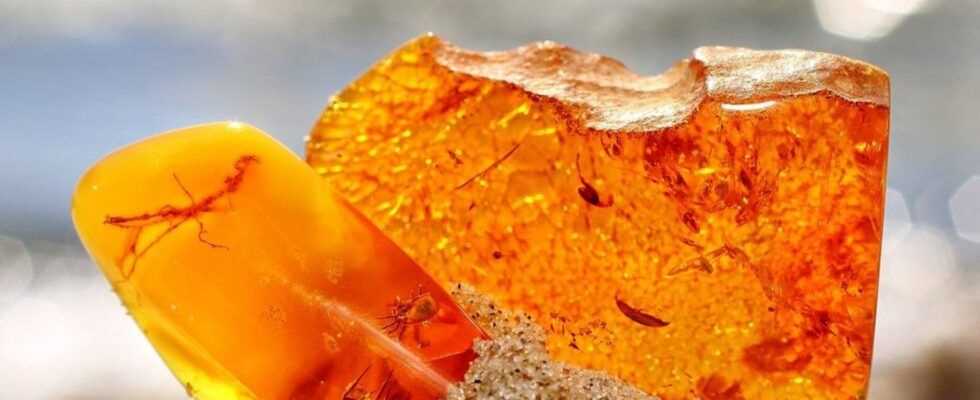Ambers
Here collectors in Germany can find what they are looking for
Amber can also be found in Germany – on the beach.
© ntv / Shutterstock.com
It is one of the oldest gemstones in the world: amber. In Germany, too, collectors can come across the fossil resin.
It is yellowish and even the Egyptians liked to adorn themselves with it: amber. It is a fossil resin that is several million years old. Worldwide there are more than 80 types of gemstones that are said to have a calming effect. Especially in the northern hemisphere, amber, also called amber or succinite, can be found on the coasts. Because there were once great forests there. In Germany, collectors can also come across the fossil resin.
Try your luck at the Baltic or North Sea
Amber is slightly heavier than water, which is why it sinks in fresh water and floats in very salty water. The fossil resin only drifts upwards when the sea is very cold and therefore has a greater density. On the southern Baltic Sea, for example on Rügen, Usedom or Hiddensee, the chances of finding amber are particularly high. On the North Sea coast, on the East Frisian Islands, there are also finds again and again.
After a storm, the chances of finding an amber are highest. Because the strong waves wash the treasures ashore. Go to the beach early in the morning and search the sand for the yellowish to brownish stones. The shallow water on the bank is also very promising. It is best to wade through the sea with a landing net.
Important distinction: phosphorus or amber
But be careful: don’t confuse amber with phosphorus – both are the same color. But phosphorus can ignite in connection with oxygen at temperatures of 20 degrees Celsius or more. Severe burns are the result. To prevent this, check beforehand what it is before the stone ends up in your trouser or jacket pocket. There are different possibilities for this.
For example, rub the stone vigorously with a woolen cloth. Amber is electrostatically charged and, among other things, attracts scraps of paper. Alternatively, with the knock test, carefully hit the stone against the front teeth. If the sound is soft and muffled, it is most likely the fossil resin.
